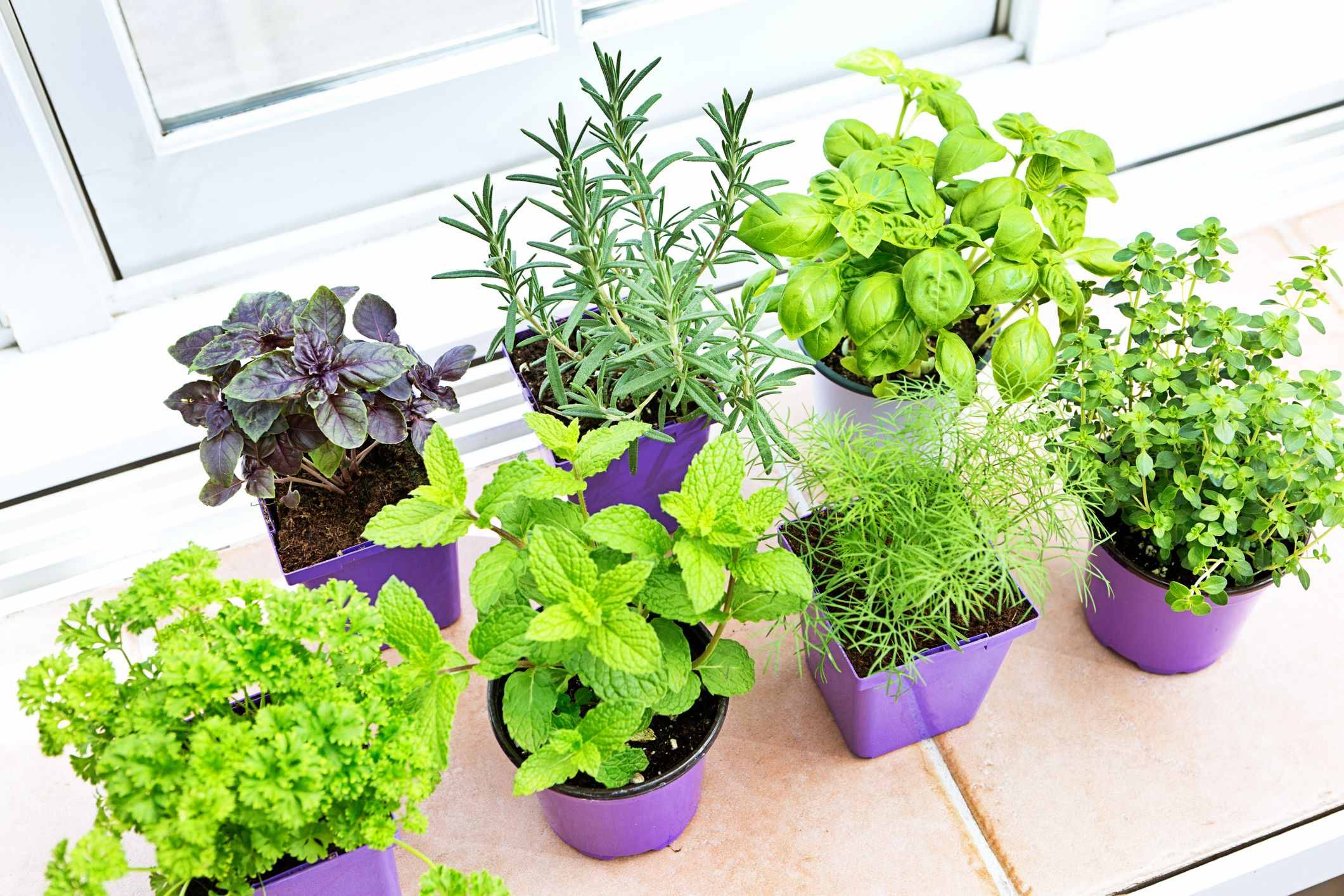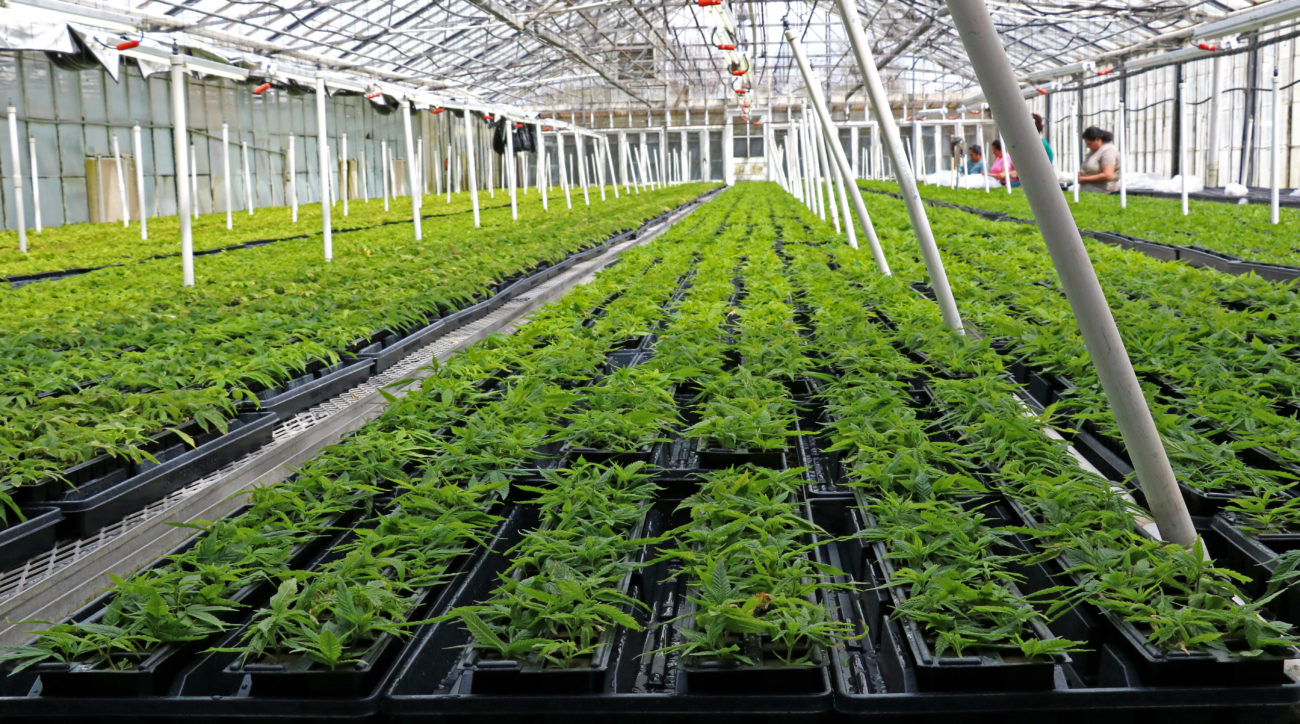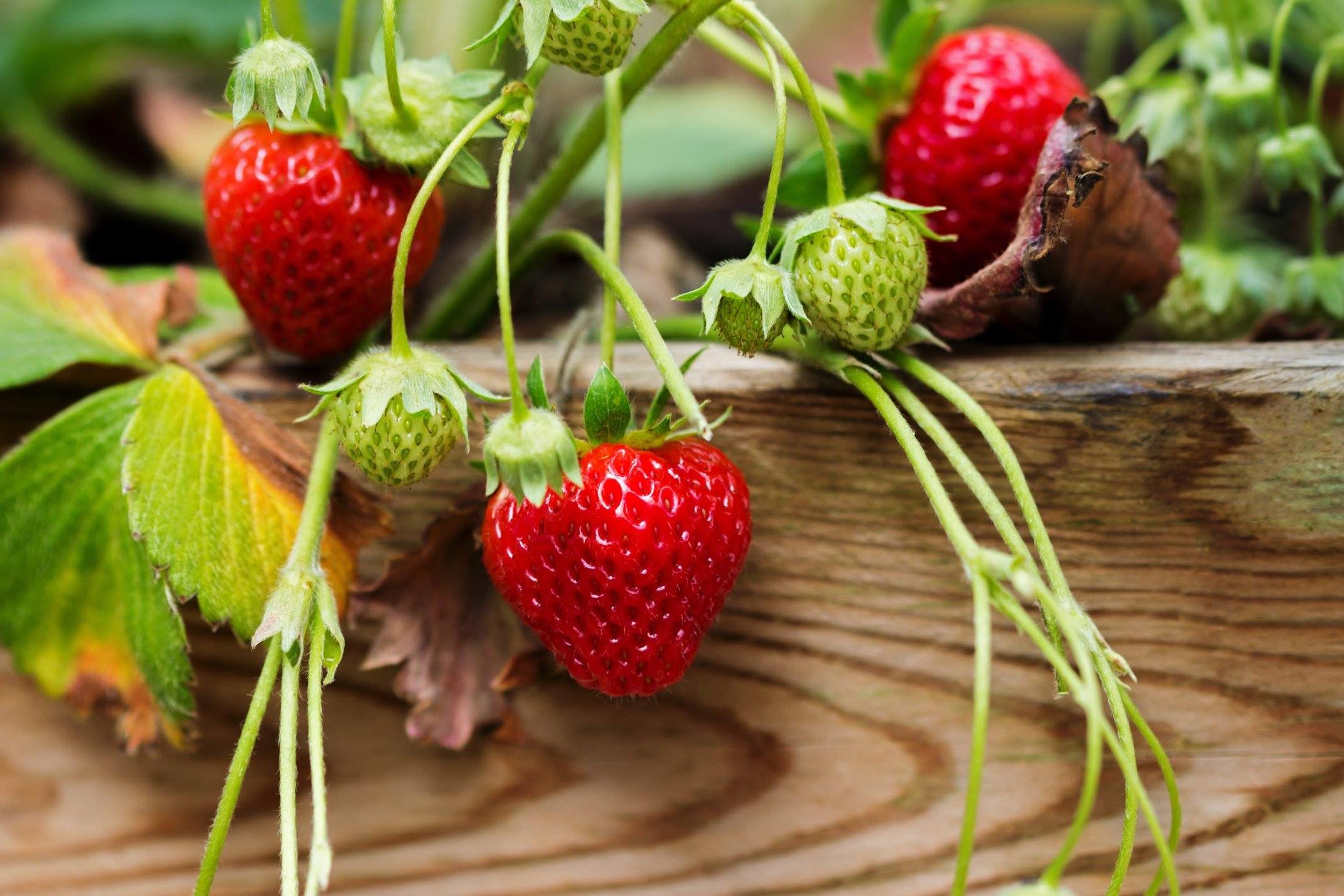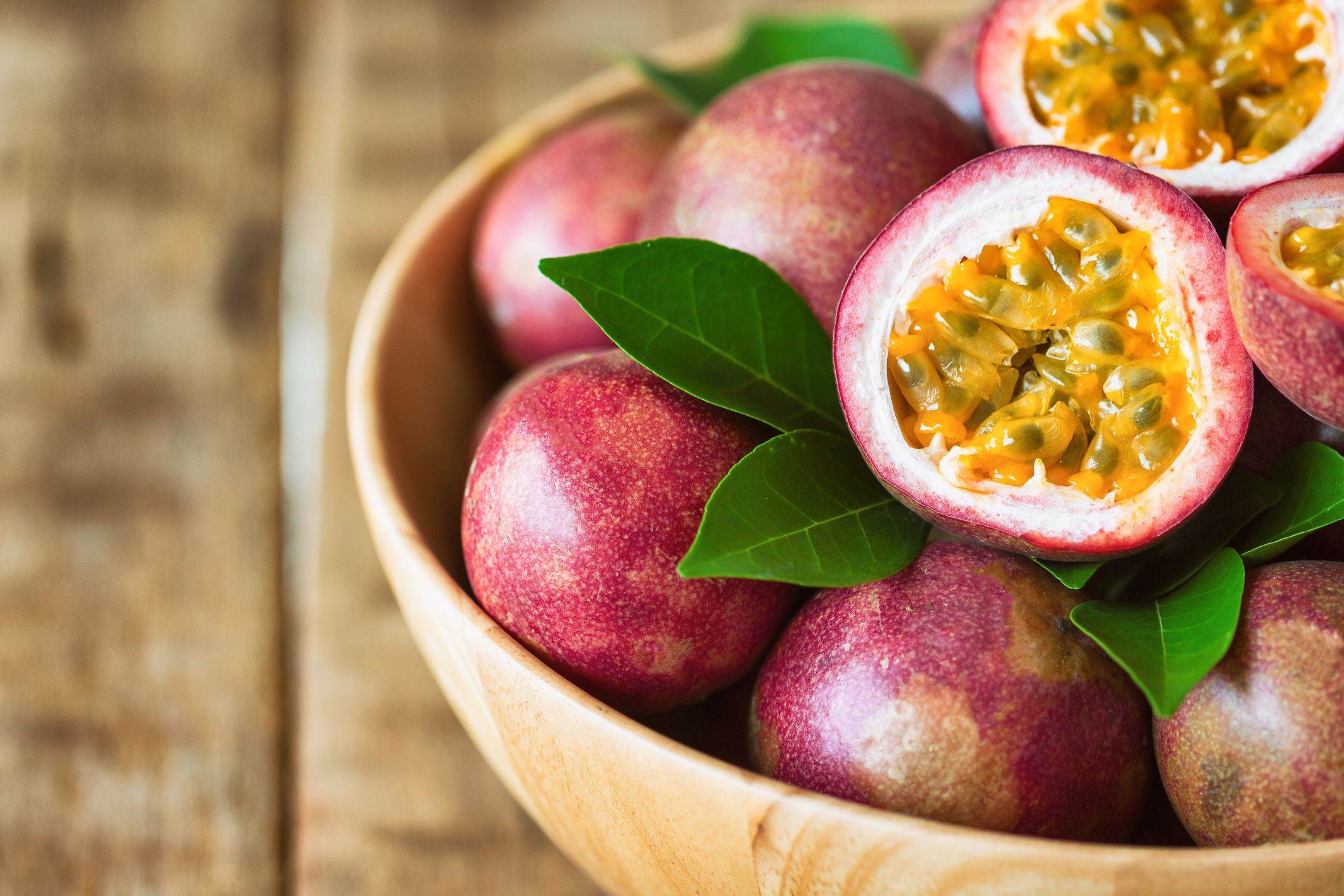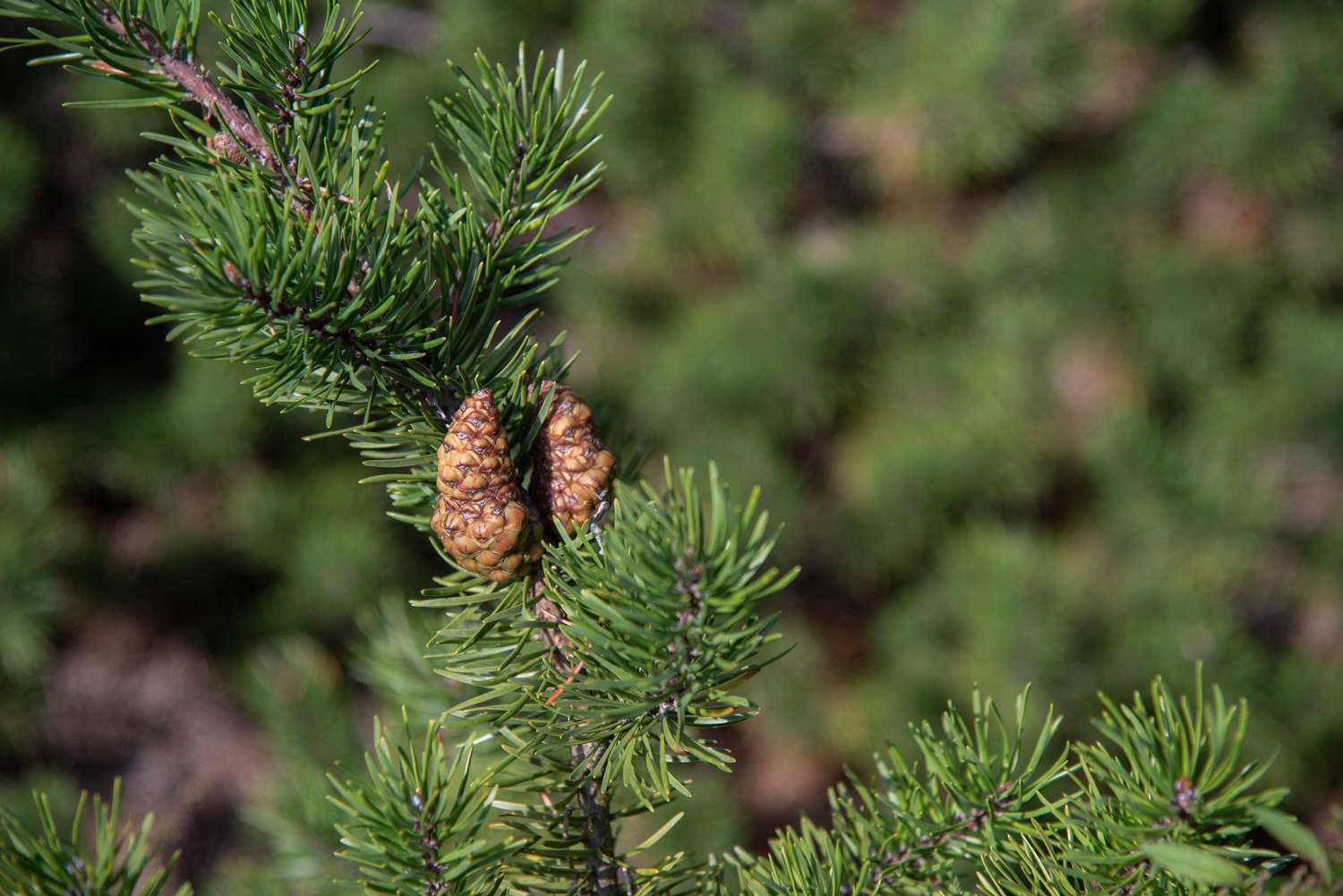Home>Types of Gardening>Edible Gardening>How To Grow Cilantro From Seeds
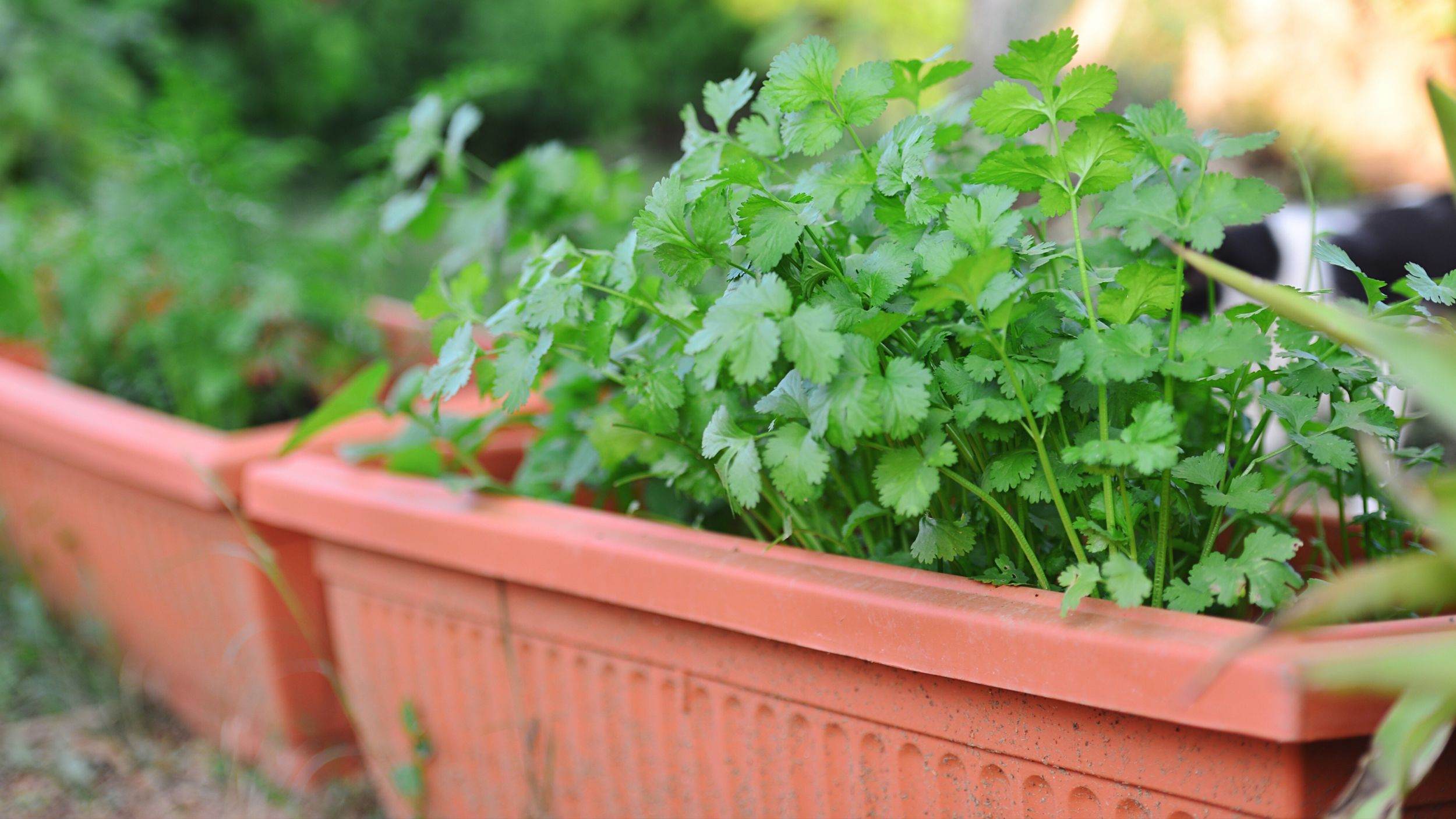

Edible Gardening
How To Grow Cilantro From Seeds
Modified: January 22, 2024
Learn how to grow cilantro from seeds in your own edible garden. Discover the steps and tips for successful cultivation.
(Many of the links in this article redirect to a specific reviewed product. Your purchase of these products through affiliate links helps to generate commission for Chicagolandgardening.com, at no extra cost. Learn more)
Table of Contents
Introduction
Welcome to the world of edible gardening, where you can grow your own fresh and delicious herbs right at home. If you’re new to gardening or looking to expand your green thumb skills, one herb that you should definitely consider growing is cilantro. Cilantro, also known as coriander, is a versatile herb with a unique flavor that adds a burst of freshness to countless dishes.
Growing cilantro from seeds is a rewarding and cost-effective way to enjoy this herb throughout the year. By following a few simple steps, you can have a continuous supply of cilantro at your disposal, ready to enhance the flavor of your favorite meals.
In this article, we will guide you through the process of growing cilantro from seeds, from selecting the right seeds to harvesting and using fresh cilantro in your kitchen. Whether you have a spacious backyard or limited space in your urban apartment, growing cilantro is a feasible and enjoyable endeavor.
Not only does growing cilantro provide a sustainable source of fresh herbs at your fingertips, but it also offers numerous benefits. Firstly, you have full control over the growth process, ensuring that no harmful pesticides or chemicals are used. Secondly, it’s cost-effective. Seeds are inexpensive, and the resulting plants can produce an abundance of cilantro. Lastly, it allows you to cultivate a deeper connection with nature and gain a sense of accomplishment as you witness your plants thrive and flourish.
So, are you ready to dive into the wonderful world of growing cilantro? Let’s get started!
Benefits of Growing Cilantro From Seeds
There are numerous benefits to growing cilantro from seeds, making it an excellent choice for any home gardener. Let’s explore some of these advantages:
- Cost-effectiveness: Growing cilantro from seeds is a budget-friendly option. Seeds are affordable and widely available, allowing you to grow a plentiful supply of cilantro without breaking the bank.
- Control over quality: By growing cilantro from seeds, you have complete control over the growth process. You can choose to grow your plants organically, ensuring that no harmful chemicals or pesticides are used. This means you can enjoy the freshest and most flavorful cilantro, knowing that it’s free from any harmful substances.
- Continuous harvest: When you grow cilantro from seeds, you can stagger the planting process, resulting in a continuous harvest. This means you’ll have a steady supply of fresh cilantro throughout the year, ready to be used in your favorite recipes.
- Culinary versatility: Cilantro is a versatile herb that can add a burst of freshness and flavor to a wide range of dishes. From salsa and guacamole to curries and stir-fries, cilantro can elevate the taste of numerous cuisines.
- Nutritional benefits: Cilantro is not only delicious but also packed with various health benefits. It is a great source of vitamins A, C, and K, as well as essential minerals like potassium and manganese. Adding cilantro to your diet can help boost your immune system and support overall well-being.
- Sustainable gardening: Growing cilantro from seeds allows you to practice sustainable gardening. By reducing your reliance on store-bought herbs, you help minimize carbon footprints associated with transportation and packaging.
- Connecting with nature: Gardening is a therapeutic and rewarding activity that allows you to connect with nature. Cultivating cilantro from seeds gives you the opportunity to experience the joys of watching your plants grow, blossom, and provide you with an abundant harvest.
As you can see, growing cilantro from seeds offers a range of benefits that go beyond just having fresh herbs on hand. It’s a cost-effective, sustainable, and fulfilling way to enhance your culinary adventures and enjoy the numerous health advantages that cilantro provides.
Choosing the Right Seeds
When it comes to growing cilantro from seeds, selecting the right seeds is crucial for a successful and bountiful harvest. Here are some key factors to consider when choosing cilantro seeds:
- Freshness: Opt for fresh cilantro seeds to ensure a higher germination rate. Fresh seeds are more likely to sprout and produce healthy plants. Check the packaging or supplier information to ensure that the seeds are recent and have been stored properly.
- Variety: Cilantro comes in different varieties, so consider your preferences and culinary needs. Common varieties include Santos, Long Standing, and Calypso, each with its own unique flavor profile and growth characteristics. Research the different varieties or consult with an experienced gardener to choose the one that best suits your preferences.
- Organic or heirloom: If you prioritize organic gardening, look for organic cilantro seeds. These seeds are produced without the use of synthetic fertilizers or pesticides, ensuring a more natural and chemical-free growing experience. Heirloom seeds are another option to consider, as they are open-pollinated and have a rich history of cultivation.
- Seed viability: Cilantro seeds have a shorter shelf life compared to other seeds. Check the viability date on the packaging to ensure that the seeds are still viable and capable of germinating. Fresh seeds typically have a higher germination rate.
- Seed source: Purchase seeds from reputable suppliers or nurseries to ensure their quality and authenticity. Look for suppliers that specialize in herb seeds or have a good reputation for providing high-quality seeds. Reading customer reviews and checking for certifications can also help you make an informed decision.
- Seed quantity: Consider the amount of cilantro you want to grow and select the seed packet accordingly. Depending on your space and consumption needs, you may opt for a smaller or larger quantity of seeds.
Remember, choosing the right seeds is the first step towards a successful cilantro growing journey. Take your time to research and select seeds that meet your preferences and requirements. With proper selection, you’ll set yourself up for a thriving cilantro garden and a rewarding harvest.
Preparing the Soil
Preparing the soil is a critical step in growing cilantro from seeds, as it provides the foundation for healthy plant growth. Here’s how you can prepare the soil for your cilantro garden:
- Choose the right location: Cilantro prefers full sun to partial shade, so select a location in your garden that receives at least 6 hours of direct sunlight per day. Ensure that the spot has well-draining soil to prevent waterlogging and root rot.
- Clear the area: Remove any weeds, rocks, or debris from the planting area. Weeds compete with cilantro for nutrients and can hinder its growth, so it’s essential to clear the area thoroughly.
- Loosen the soil: Use a garden fork or tiller to loosen the soil in the planting area. This will improve drainage and promote root penetration. Avoid compacting the soil too much, as cilantro roots need space to grow and access nutrients.
- Amend the soil: Cilantro thrives in fertile soil, so consider adding organic matter like compost or well-rotted manure. These amendments improve soil structure, enhance nutrient content, and retain moisture, creating an ideal environment for cilantro to grow. Work the compost into the top 6-8 inches of soil.
- Test the soil pH: Cilantro prefers slightly acidic to neutral soil with a pH range of 6.2 to 6.8. Test the soil’s pH using a soil testing kit, available at garden centers or online. If necessary, adjust the pH by adding soil amendments like lime to raise the pH or sulfur to lower it.
- Smooth the soil surface: After amending the soil, rake the surface to create a smooth and level bed for planting. This will ensure even water distribution and make it easier for the cilantro seeds to establish roots.
Taking the time to properly prepare the soil sets the stage for successful cilantro cultivation. It creates a favorable growing environment, encourages healthy root development, and provides the necessary nutrients for robust plant growth. With well-prepared soil, your cilantro seeds will have the best chance of thriving and producing a bountiful harvest.
Sowing the Seeds
Now that you have prepared the soil, it’s time to sow the cilantro seeds. Here are the steps to follow for successful seed sowing:
- Timing: Cilantro prefers cooler temperatures, so it’s best to sow the seeds in early spring or fall. Avoid planting when the weather is extremely hot, as cilantro tends to bolt and produce flowers prematurely in high temperatures.
- Spacing: Create furrows in the soil, spaced about 6 to 8 inches apart. The depth of the furrows should be approximately 1/4 to 1/2 inch.
- Sow the seeds: Place the cilantro seeds in the furrows, spacing them about 1 inch apart. Try to maintain an even distribution of seeds to ensure uniform growth. If your growing space is limited, consider using containers or raised beds for efficient seed sowing and utilization of space.
- Cover the seeds: Gently cover the cilantro seeds with a thin layer of soil, ensuring that they are adequately protected but not buried too deeply. Lightly tamp down the soil to ensure good seed-to-soil contact.
- Water and mulch: After sowing the seeds, water the area thoroughly. Keep the soil consistently moist but not waterlogged throughout the germination period. To help retain moisture and suppress weed growth, you can apply a layer of organic mulch around the plants.
- Thinning: Once the cilantro seedlings have emerged and are a couple of inches tall, thin them out to provide enough space for proper growth. Thin the seedlings to a spacing of 3 to 4 inches apart, allowing the remaining plants to receive adequate sunlight and nutrients.
- Succession planting: To ensure a continuous harvest, consider succession planting cilantro every few weeks. This staggered planting method helps to extend the growing season and provides a consistent supply of fresh cilantro leaves.
By following these steps, you will give your cilantro seeds the best chance of germinating successfully and growing into healthy, thriving plants. Remember to monitor the soil moisture and provide regular care as the seedlings continue to grow.
Providing Optimal Growing Conditions
To ensure the healthy growth and development of your cilantro plants, it’s important to provide them with optimal growing conditions. Here are some key factors to consider:
- Sunlight: Cilantro thrives in full sun to partial shade. Ensure that your plants receive at least 6 hours of direct sunlight each day. However, in regions with hot summers, providing some afternoon shade can help prevent the plants from bolting prematurely.
- Temperature: Cilantro prefers cool temperatures ranging from 50°F to 85°F (10°C to 29°C). Avoid planting during the peak heat of summer, as excessive heat can cause the plants to bolt and go to seed too quickly. If the temperature rises, provide shade, or try planting in a location that receives morning sun and afternoon shade.
- Watering: Cilantro requires consistent moisture but should not be overwatered. Aim to keep the soil evenly moist, but avoid waterlogging, as this can lead to root rot. Water deeply when the top inch of soil feels dry, and ensure that the soil drains well to prevent stagnant water accumulation.
- Soil fertility: Cilantro prefers well-draining soil rich in organic matter. Before planting, amend the soil with compost or well-rotted manure to improve fertility and moisture retention. Regularly adding organic matter or using organic fertilizers can help promote healthy growth and enhance overall plant vigor.
- Air circulation: Proper air circulation is essential for preventing the development of fungal diseases in cilantro. Avoid overcrowding plants and provide adequate spacing between them to encourage airflow. This will help reduce the risk of fungal infections and promote healthy growth.
- Protection from pests: Cilantro can be susceptible to pests such as aphids, caterpillars, and leafminers. Monitor your plants regularly and take necessary measures to prevent and control infestations. Using organic pest control methods or companion planting with beneficial insect-attracting flowers can help keep the pest population in check.
- Regular maintenance: Remove any yellowed or damaged leaves promptly to prevent the spread of diseases and encourage new growth. Additionally, consider trimming the plants to promote bushier growth and ensure a continuous supply of fresh leaves.
By providing these optimal growing conditions, you’ll give your cilantro plants the best chance to thrive and produce abundant foliage for a flavorful harvest. Regular observation and care will help maintain the health and vitality of your cilantro plants throughout the growing season.
Watering and Fertilizing
Proper watering and fertilizing are essential for the healthy growth and productivity of your cilantro plants. Here are some guidelines to follow:
- Watering: Cilantro prefers consistent moisture but should not be overwatered. Check the moisture level of the soil regularly by inserting your finger into the top inch. Water deeply when the soil feels dry, but avoid waterlogging, as this can lead to root rot. Aim to keep the soil evenly moist, especially during dry periods.
- Irrigation method: It’s best to water your cilantro plants at the base rather than from above to avoid wetting the foliage excessively. This can help prevent the development of fungal diseases. Consider using a drip irrigation system or watering directly at the soil level to ensure efficient water delivery.
- Fertilizing: Cilantro generally does not require heavy fertilization. However, incorporating organic matter into the soil before planting can provide a good foundation of nutrients. If you notice slow growth or yellowing leaves, you can supplement with a balanced organic fertilizer once every 4-6 weeks. Avoid over-fertilizing, as this can lead to excessive leaf growth and reduced flavor.
- Fertilizer selection: When selecting a fertilizer, opt for a balanced organic fertilizer with equal amounts of nitrogen (N), phosphorus (P), and potassium (K). This will provide a well-rounded nutrient profile that supports overall plant growth. Follow the instructions on the fertilizer packaging for application rates and frequency.
- Compost tea: Another option for fertilizing cilantro is using compost tea. Compost tea is a nutrient-rich liquid fertilizer made from steeping compost in water. Dilute the compost tea according to the instructions and use it to water your cilantro plants once every 2-4 weeks. It provides a natural boost of nutrients and beneficial microorganisms.
- Timing: When fertilizing cilantro, it’s best to apply the fertilizer in the early stages of growth and then reduce or stop fertilizing once the plant reaches maturity. Over-fertilization in the later stages can lead to excessive leaf growth and negatively impact flavor.
- Observation and adjustment: Pay attention to the growth and appearance of your cilantro plants. If you notice any signs of nutrient deficiency or excessive growth, adjust your watering and fertilizing practices accordingly. Regular observation and adjustment will help ensure that your cilantro plants receive the right amount of water and nutrients for optimal growth.
By following these watering and fertilizing guidelines, you’ll provide your cilantro plants with the essential hydration and nutrients they need to thrive. Proper watering and fertilizing practices contribute to healthy foliage, robust growth, and flavorful leaves for your culinary adventures.
Pest and Disease Control
Like any plants, cilantro can be susceptible to pests and diseases. It’s important to be proactive in identifying and controlling these issues to ensure the health and productivity of your cilantro plants. Here are some common pests and diseases that may affect cilantro, along with control measures:
- Aphids: Aphids are tiny, soft-bodied insects that can cluster on the undersides of cilantro leaves and suck sap from the plants. To control aphids, wash them off with a strong blast of water or use insecticidal soap or neem oil spray. Ladybugs and lacewings are natural predators that feed on aphids and can help control their population.
- Cabbage worms: Cabbage worms are green caterpillars that can chew holes in cilantro leaves. Handpick and destroy any visible worms. You can also use Bacillus thuringiensis (Bt), a natural bacterial insecticide, to control cabbage worms effectively.
- Leafminers: Leafminers are tiny larvae that feed inside cilantro leaves, creating winding tunnels or “mines.” Remove and destroy infested leaves to prevent the spread of leafminers. Regularly monitoring your plants can help detect infestations early, allowing for prompt action.
- Fungal diseases: Cilantro can be susceptible to fungal diseases such as powdery mildew and leaf spot. To prevent fungal infections, ensure proper air circulation by providing adequate spacing between plants and removing overcrowded foliage. Avoid overhead watering, as excess moisture on the leaves can promote fungal growth. If necessary, apply a fungicidal spray according to the product instructions.
- Root rot: Overwatering or poorly drained soil can lead to root rot in cilantro plants. To prevent root rot, ensure that the soil has good drainage and avoid excessive watering. If root rot occurs, remove affected plants and improve the drainage of the soil for future plantings.
- Companion planting: Companion planting cilantro with plants like marigolds and dill can help deter certain pests such as aphids and cabbage worms. These companion plants release natural compounds that repel pests and attract beneficial insects.
- Regular inspection: Regularly inspect your cilantro plants for signs of pests or diseases. Early detection is crucial for effective control. Remove and destroy any infested or diseased plant material to prevent the spread of pests and diseases.
By implementing these pest and disease control measures, you can minimize the impact of common issues on your cilantro plants. Regular monitoring, prompt action, and proper cultural practices are key to maintaining the health and vitality of your cilantro crop.
Harvesting Cilantro
Harvesting cilantro at the right time is crucial to enjoy its fresh and flavorful leaves. Here are some tips to guide you through the harvesting process:
- Growth stage: Cilantro can be harvested once it reaches the leafy stage, usually around 3-4 weeks after planting. During this stage, the plant has developed enough foliage for harvesting, but before it starts to bolt and produce flowers.
- Leaf harvesting: When harvesting cilantro leaves, you can either harvest individual leaves or cut the entire plant. To harvest individual leaves, simply snip the outer leaves from the plant using gardening shears or scissors. Leave the inner leaves untouched to allow for regrowth. If you prefer to harvest the entire plant, cut it a couple of inches above the soil level. This will encourage new growth for future harvests.
- Timing: Harvest cilantro leaves in the morning, when the plant is at its freshest and the essential oils are at their peak. The leaves are most flavorful prior to the plant flowering. Regular harvesting promotes continued leaf growth and prolongs the harvest period.
- Harvesting flowers and seeds: If you allow cilantro plants to bolt and produce flowers, you can harvest the flowers and seeds, known as coriander. The flowers are edible and can be used as a garnish or in salads. Once the flowers dry up and turn brown, harvest the seeds by cutting the stems and collecting them in a paper bag. Allow the seeds to fully dry before storing them for future use.
- Frequent but moderate harvesting: Harvest cilantro leaves frequently but in moderation. This allows the plant to continue growing and producing fresh leaves. Avoid overharvesting, as it can weaken the plant and reduce its productivity.
- Storage: Freshly harvested cilantro can be stored in the refrigerator for up to a week. Before storing, remove any excess moisture by gently patting the leaves dry or wrapping them in a paper towel. To extend the storage life, you can also trim the stems and place the cilantro in a glass of water, similar to a bouquet of flowers.
By following these guidelines, you can enjoy a continuous harvest of fresh cilantro leaves throughout the growing season. Regular harvesting not only provides you with a constant supply of this flavorful herb but also promotes the growth of new leaves for future use.
Storing and Using Fresh Cilantro
Proper storage and utilization of fresh cilantro will help you make the most out of your harvest. Here are some tips for storing and using fresh cilantro:
- Storage in the refrigerator: To extend the shelf life of cilantro, store it in the refrigerator. Start by removing any rubber bands or ties from the bunch. Rinse the cilantro leaves thoroughly to remove any dirt or debris, then gently pat them dry or use a salad spinner. Wrap the cilantro loosely in a paper towel or place it in a perforated plastic bag to allow for air circulation. Keep it in the vegetable crisper drawer of your refrigerator.
- Using the stems: Cilantro stems are also flavorful and can be used in cooking. Instead of discarding the stems, chop them finely and use them along with the leaves. The stems add a slightly different flavor profile to your dishes and can be a valuable addition to recipes.
- Freezing: If you can’t use all your cilantro before it starts to wilt, consider freezing it for later use. Blanch the cilantro leaves for about 10 seconds in boiling water, then immediately transfer them to an ice bath to cool. Pat the leaves dry and pack them into freezer-safe containers or freezer bags. Label and date the containers before storing them in the freezer. Frozen cilantro can be used later in cooked dishes like soups, stews, and sauces.
- Culinary uses: Cilantro is a versatile herb with a distinctive flavor that complements various cuisines. It is commonly used in Mexican, Indian, Thai, and Middle Eastern dishes. Add freshly chopped cilantro leaves to salsas, guacamole, curries, stir-fries, salads, and marinades for a zesty and vibrant touch.
- Pairing with other ingredients: Cilantro pairs well with lime, garlic, cumin, and jalapenos, among other ingredients. Experiment with different flavor combinations to create exciting and unique dishes. The fresh and citrusy aroma of cilantro adds brightness to many recipes.
- Drying for later use: While cilantro is best used fresh, you can also dry it for use in situations where fresh cilantro is not available. Hang the cilantro bunch upside down in a well-ventilated, dark room. Once the leaves are dry and brittle, remove them from the stems and store them in an airtight container. Dried cilantro can be used in spice blends, rubs, or infusions.
Whether using cilantro immediately or storing it for later, these tips will help you make the most of this versatile herb. By properly storing and utilizing fresh cilantro, you can enjoy its unique flavor and enhance the taste of your favorite dishes throughout the year.
Conclusion
Growing cilantro from seeds is a rewarding and enjoyable experience that allows you to have a constant supply of this versatile herb right at your fingertips. By following the steps outlined in this article, from choosing the right seeds to harvesting and storing fresh cilantro, you can successfully cultivate this flavorful herb in your own garden.
From the numerous benefits of growing cilantro, such as cost-effectiveness, control over quality, and sustainable gardening, to the importance of preparing the soil and providing optimal growing conditions, every step plays a crucial role in the success of your cilantro garden.
Understanding how to sow cilantro seeds, water, and fertilize the plants properly, as well as how to protect them from pests and diseases, ensures their healthy growth and productivity. Harvesting cilantro leaves at the right time, storing them appropriately, and utilizing the fresh herb in a variety of culinary preparations further enhances the satisfaction of growing cilantro from seeds.
Whether you have a spacious backyard or a small urban balcony, growing cilantro allows you to connect with nature, add vibrant flavor to your dishes, and take pride in your own homegrown herbs.
So, embrace the joys of edible gardening and embark on the journey of growing cilantro from seeds. With a little care and attention, you’ll be rewarded with a bountiful harvest of fresh cilantro leaves that will elevate the taste of your meals and bring a touch of culinary delight to your kitchen.


